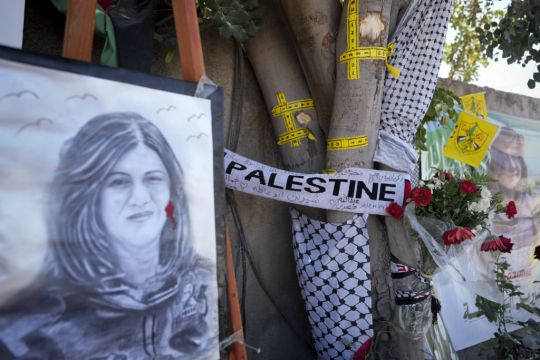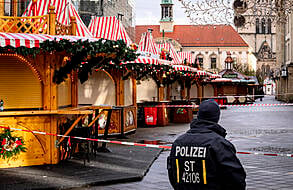Almost two weeks after veteran Al Jazeera reporter Shireen Abu Akleh died, a reconstruction has lent support to claims from Palestinian authorities and her colleagues that the bullet that killed the Palestinian-American came from an Israeli gun.
Despite the investigation by Associated Press reporters, any conclusive answer over the incident during an Israeli raid at the Jenin refugee camp in the West Bank is likely to prove elusive because of the severe distrust between the Israelis and Palestinians, each of which is in sole possession of potentially crucial evidence.
Multiple videos and photos taken on the morning of May 11 show an Israeli convoy parked just up a narrow road from Ms Abu Akleh, with a clear line of sight.

They show the reporters and other bystanders in real time taking cover from bullets fired from the direction of the convoy.
The only confirmed presence of Palestinian militants was on the other side of the convoy, some 300 metres (656ft) away, mostly separated from Ms Abu Akleh by buildings and walls.
Israeli officials said at least one militant was between the convoy and the journalists, but it has not provided any evidence or indicated the shooter’s location.
Palestinian witnesses say there were no militants in the area and no gunfire until the barrage that struck Ms Abu Akleh and wounded another reporter.
Those witnesses say they have no doubt that it was Israeli soldiers who killed Ms Abu Akleh, now celebrated as a martyr to both journalism and the Palestinian cause.

The Israeli military said she was killed in a complex shootout between soldiers and militants, and that only a full investigation – including forensic analysis of the bullet – could prove who fired the fatal shot.
The Palestinians have refused to hand over the bullet recovered from her body or to cooperate with Israel in any way on the investigation, but say they will share the results of their own probe with any other party.
Ms Abu Akleh’s death has heightened tensions in the Middle East amid a wave of violence and raised new concerns over the safety of reporters covering Israel’s nearly 55-year military occupation of the West Bank, which the Palestinians want as the main part of their future state.
Associated Press reporters visited the location where Ms Abu Akleh was killed on the edge of the Jenin refugee camp in the northern West Bank, as well as the scene of a nearby battle with Israeli forces captured on a video shared by Israel.
Interviews with five Palestinian eyewitnesses corroborate an analysis by the Dutch-based Bellingcat research group indicating Israeli forces were closer to Ms Abu Akleh and had a better line of sight.
The group, which specialises in geolocating events in war zones by analysing photos and video shared online, pinpointed the location of the convoy just up a narrow road from where Ms Abu Akleh was killed.







